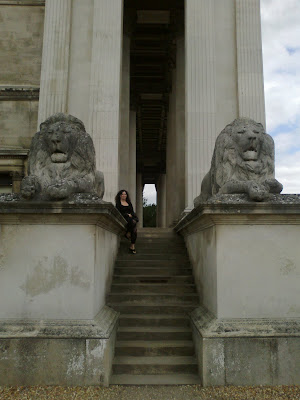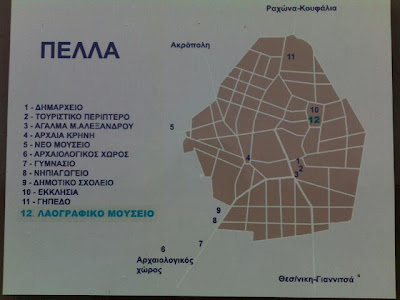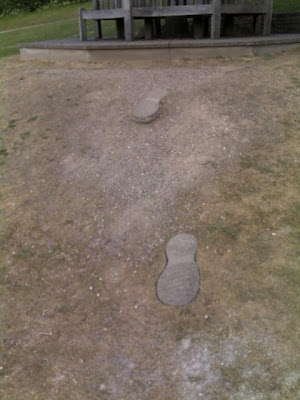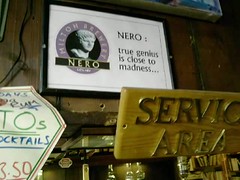So, that holiday in Florida then, in which I learned many top facts about the history of the NASA space programme. You have been warned.
First, I demonstrated my own unsuitability as a spaceman by missing my flight. I read 13.00 as 3 pm, and arrived at Gatwick at ten-to-twelve thinking I was heroically early. Saw my error the moment I looked at the departures board, and hot-footed it over to the Virgin Atlantic desk, who thought I’d still have time to make my flight. They then vanished for 15 minutes, trying to work out if I could be fast-tracked through security. Answer came there none.
The airport was extremely busy, it being half term. And the longer I waited the more obvious it was I wouldn’t be jetting off that afternoon. Got put on the same flight the next day at no extra charge, which seemed a pretty good compromise. Schlepped my luggage back home.
The flight the next day was packed, mostly with families spending half-term at Disney. They ran about and squealed. I read a couple of hundred pages of
Anathem (still not finished it yet; it’s huge!) and watched
Star Trek, the first ten minutes of Ice Age 3 – a world of unfunny whenever the characters spoke – and something else so dull I can't even remember. Didn’t sleep; I never do on planes, and my knees were pressed against the seat in front so I could never get comfy.
Arrived in Orlando eight hours later feeling itchy and stinky, and then spent an hour getting through customs. A nice man wanted to go through all my luggage, and was suspicious of the various Dr Who books I’d brought for the convention’s charity auction. But then he looked up the details of
Hurricane Who on his computer, lit up that it was something to do with Torchwood, and let me go.
J and J were waiting to collect me, and with this delay were a little concerned that I might have got it wrong again. We drove to the hotel in Celebration, and after a shower and a change of clothes, I emerged in time for dinner at a place down the road. American food is often big and meaty, which can leave you feeling a bit like a blocked sink. But we found a splendid Japanese place where a man cooked noodles and juggled knives on the table in front of us, and I stocked up on lots of veg. A world of tired after the journey, I think I spent most of the meal just grinning.
On the Wednesday, a party of us made our way to
Universal Studios, where we did the usual rides. Think the 3D simulator Simpsons was probably best. There was bar and meal in the evening, with more chums arriving ever moment.
On Thursday, K magnificently drove me out to
Kennedy Space Center, while our chums gambolled off to Disney. We stopped off for provisions on the way; the only British papers available were the Sun, Express and Mail.
After an hour’s drive, we reached the edge of the vast swamp that is the Space Center, and I went into geek overdrive. There was an IMAX show and things to gawp at first, and I poddled about in a state of bliss.
The IMAX show included footage of a fake Moon landing, NASA happy to laugh at the conspiracy theory. There was also a tribute to those who’d died pioneering space travel which included the names of cosmonauts, given equal billing with the Apollo 1 astronauts and Challenger and Colombia. It wasn’t quite the Corporate NASA I’d been expecting – less flag-waving and triumphalist than a lot of coverage of this stuff.
We then clambered aboard our bus for the
Then and Now tour through the beach-side missile launch sites that first put Americans into space – basically, those bits covered by
The Right Stuff. We drove past the warehouses and hangers where things really happened, and where the film was really filmed.

Many on the tour had been in the area the previous day to see the launch of the
Ares 1-x rocket – which I’d missed, dammit. There was much talk of the launch being like the good old days before the Space Shuttle (which Ares is replacing), when rockets rattled windows 20 miles away. I had to be content with spying the Shuttle Atlantis out on the pad, six miles away on the horizon. Cor.
We stopped off at the site of some of the early Mercury launches, and got to poke round inside the squat little buildings no more than 500 feet from the launch pad. Nowadays, the boffins sit three miles from a launch, but in the days of DC current, they couldn’t be further away. Even today, a rocket launch will rattle your windows 25-30 miles away, so this small, cramped bunker crammed with chain-smoking boffins would have been very noisy.
The squat little buildings have huge, heavy blast doors and 15 layers of laminate glass so thick the view outside is greenish. The wall-to-wall computers are bulky to cope with the rattling of a launch. They managed just 528 bytes, and I liked the built-in ashtrays. When there were software problems, they'd use a manual typewriter to rewrite the code and feed it in on spool tape.
Our guide was nicely open about the origins of American rocketry, showing us a rare example of a V2 engine while explaining what rockets like that had done to south London. He himself raised the dubious morality in pardoning the former Nazi
Werhner von Braun; again, this wasn’t the kind of corporate history I’d quite expected. NASA seemed keen to challenge their own history, to ask the difficult questions.
In fact, it didn’t feel very on-message for what’s clearly a highly secure military base. Our map of the launch sites shows its original purpose as a missile base, and the garden – or graveyard – of old rockets was curtly unapologetic about the ballistic and nuclear capability.
The missile base on Florida's Cape Canaveral was chosen for three reasons: the generally good weather; on a “bad day” the launches would fall into the ocean not into populated areas; and it's relatively close to the equator, which means less effort to get into space because of the speed of the Earth's rotation.

As we stepped out on to the tarmac of Pad 34 the weather hit 94 degrees. The heat pressed against me as I walked round the tall concrete structure remaining, and the plaque to the
Apollo 1 fire. We were warned not to step off the tarmac because of the alligators in the undergrowth. In fact, when the space shuttles come into land, it’s someone’s job to clear off the alligators sunbathing on the runway. All we saw today was a giant tortoise.

The tour finished with a visit to a
Saturn V rocket – the ones that launched the Apollo missions – and some other cool stuff. We gaped at the vastness of this great firework and took pictures, then had to get back to the car and our evening’s commitments.
First there was the
Cricketer’s Arms, where there was London Pride on tap. Drank myself into a happy corner, and woke up Friday not at all well. Still, manfully, made my first panel – where adrenalin and Alka Seltzer saw off the hangover.
The convention was good fun, and I didn’t do too badly at
Just A Minute – though New Fans are so new they didn’t get a reference to the
Curse of Fenric which deserved a massive laugh. Our efforts were apparently recorded for a podcast, God help you.
Saturday morning, we had a talk from Russell Romanella, Director of the International Space Station and Spacecraft Processing at Kennedy Space Center, which was a further world of geek joy. When Kennedy made his famous speech about getting to the Moon within the decade on 25 May 1961, the US only had 15 minutes experience in space – Alan Shepherd having become the first American in space just three weeks before. It’s a balls out moment for Kennedy; either we divert everything into doing this thing, or we don’t bother at all.
The talk was also up to date, with discussion of the Ares launch from just that week, and what the
Augustine report to President Obama might mean for NASA’s current targets.
There were more panels and signings and being talked to, and I got to see
Toby Hadoke's Moths Ate My Doctor Who Scarf for the sixth time.

Between my commitments, there were goth ducks and geckos to gawp at, and a pool to escape into. As always, talked rubbish, made new friends and molested the old ones.
After one last morning in the pool, I headed for the airport on Monday afternoon. Bloke next to me on the plane thought
Moon was “rubbish”, but seemed quite taken by General Infantryman Joe. (Isn't that a dull name for a hero?)
Back to freezing cold London on Tuesday morning. There’s little more dispiriting than changing trains at East Croydon, especially when the train is cancelled and you have to wait an hour. So I fell into a taxi and home.
Slowly recovered from jetlag and the inevitable con lurgie. On Thursday went to posh singing in
St Mary’s Undercroft, the chapel down below Westminster Hall in the Palace of Westminster. The Pugintastic furnishing and some of the tunes seemed a little arch-Catholic: an odd way to celebrate Guy Fawkes’ night. But the detailed programme included top facts.
On Saturday, there were more fireworks, this time in view of
Alexandra Palace (from the Dr Who episode
The Idiot’s Lantern, no less). We risked clambering out on to a chum’s roof to see the display, then clambered back in to drink too much and watch X-Factor.
Now steeped in work again: pitching for things, organising things, getting on with the writing. And hoping Virgin will fix my telly input in time for Doctor Who on Sunday. Will blog about Dirk Bogarde next.
 A week ago, I was on Venice Beach in Los Angeles with the Dr. She took me to Small World Books - a cool little bookshop crammed with good stuff I'd never heard of, exactly my idea of a treat - and I looked for something with a link to LA. I found Raymond Chandler's The Long Goodbye.
A week ago, I was on Venice Beach in Los Angeles with the Dr. She took me to Small World Books - a cool little bookshop crammed with good stuff I'd never heard of, exactly my idea of a treat - and I looked for something with a link to LA. I found Raymond Chandler's The Long Goodbye.


























 Many on the tour had been in the area the previous day to see the launch of the
Many on the tour had been in the area the previous day to see the launch of the  As we stepped out on to the tarmac of Pad 34 the weather hit 94 degrees. The heat pressed against me as I walked round the tall concrete structure remaining, and the plaque to the
As we stepped out on to the tarmac of Pad 34 the weather hit 94 degrees. The heat pressed against me as I walked round the tall concrete structure remaining, and the plaque to the  The tour finished with a visit to a
The tour finished with a visit to a  Between my commitments, there were goth ducks and geckos to gawp at, and a pool to escape into. As always, talked rubbish, made new friends and molested the old ones.
Between my commitments, there were goth ducks and geckos to gawp at, and a pool to escape into. As always, talked rubbish, made new friends and molested the old ones.










